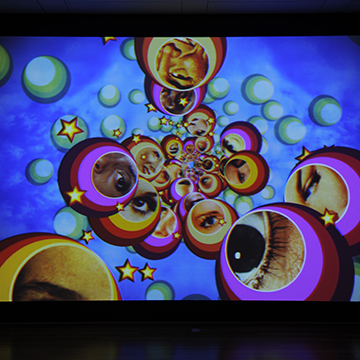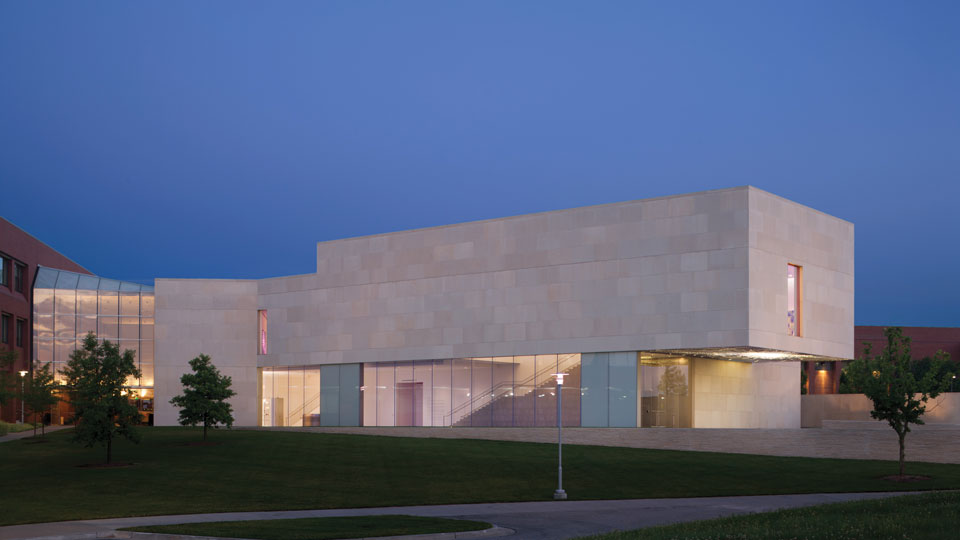Op Eyes · Barry Anderson
As part of Johnson County Community College’s ongoing integration of art into the daily lives of students and visitors, works of art were acquired over the past several years for installation in the Regnier Center. A two-story glass “cube” was designed by the building’s architect (Gould Evans Associates) to serve as an iconic element at the Regnier Center’s main entrance. The “cube” also has the capacity for large-scale projection on its towering south wall of glass.
In 2007, Kansas City-based artist Barry Anderson was commissioned to create a video which can be featured on this space. Additionally, Anderson created a version of this work for presentation in the Nerman Museum’s Oppenheimer New Media Gallery, Second Floor, NMOCA.
Anderson’s Op Eyes was created in part from appropriated American advertising images of the 1950s to 1970s, an era which historically represents a massive change in the cultural landscape of the country.
This period is not referenced out of a simple sense of nostalgia but rather for an historical counterpoint to our present era. Due to evolving economic, social, and ethnic factors in the middle of the 20th century, our cultural homogeny began a period of erosion. Now, however, global telecommunications and corporate culture are causing a different sort of homogeny to evolve, one based on entertainment and consumerism.
Anderson's continuing interest in truly "motion pictures" relates more to the history of painting and collage (in the case of Op Eyes, specifically Pop and Op) than that of video and cinema. This is heightened by the use of motifs commonly related to trance and psychedelia such as hyper color, limitless space, and looping rhythm. Here, these motifs are not intended to create a state of euphoria or release from reality, but rather to focus intently on the present moment. They are also used to further question typical expectations of the video medium both in popular culture (news reporting, narrative entertainment, etc.) and in the contemporary art world (conceptual performance, experimental narrative, etc.).
The video’s central images, the eyes, act as surrogates for the cultural landscape of the campus. Their intertwined movement, which can be seen as referencing DNA strands, in the endlessly receding space of the video, are meant to both literally and figuratively draw viewers into the architecture of the structure, emphasize the purpose of the campus, and reference the biotechnology component of the Regnier Center.
Anderson was born in Greenville, Texas, in 1969. He holds an MFA from Indiana University and a BFA from the University of Texas, Austin. He is an Associate Professor of Art & Art History and teaches new media at the University of Missouri, Kansas City. His work in video and installation has been shown extensively around the country as well as abroad. He lives in Westwood, Kansas.





